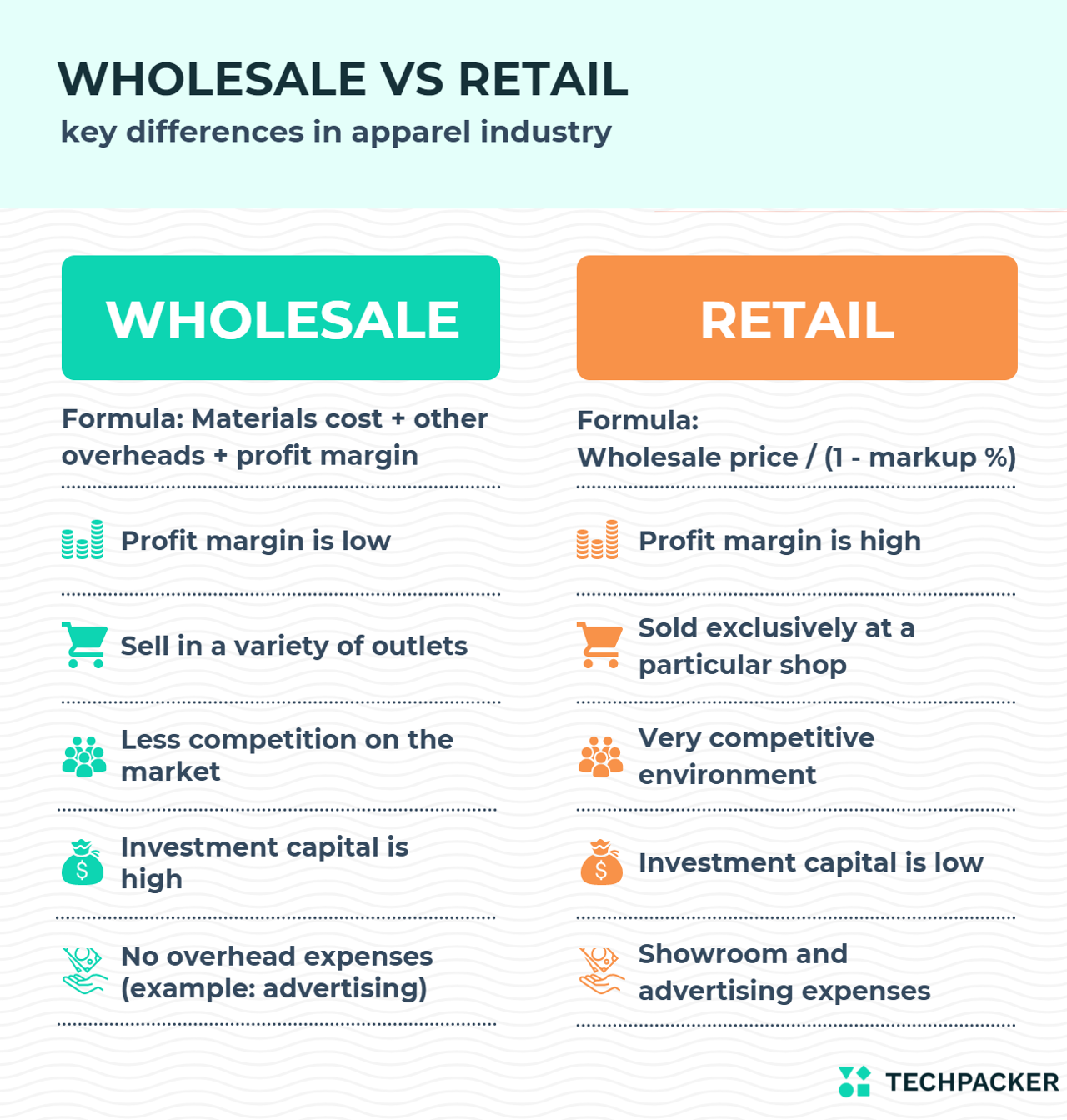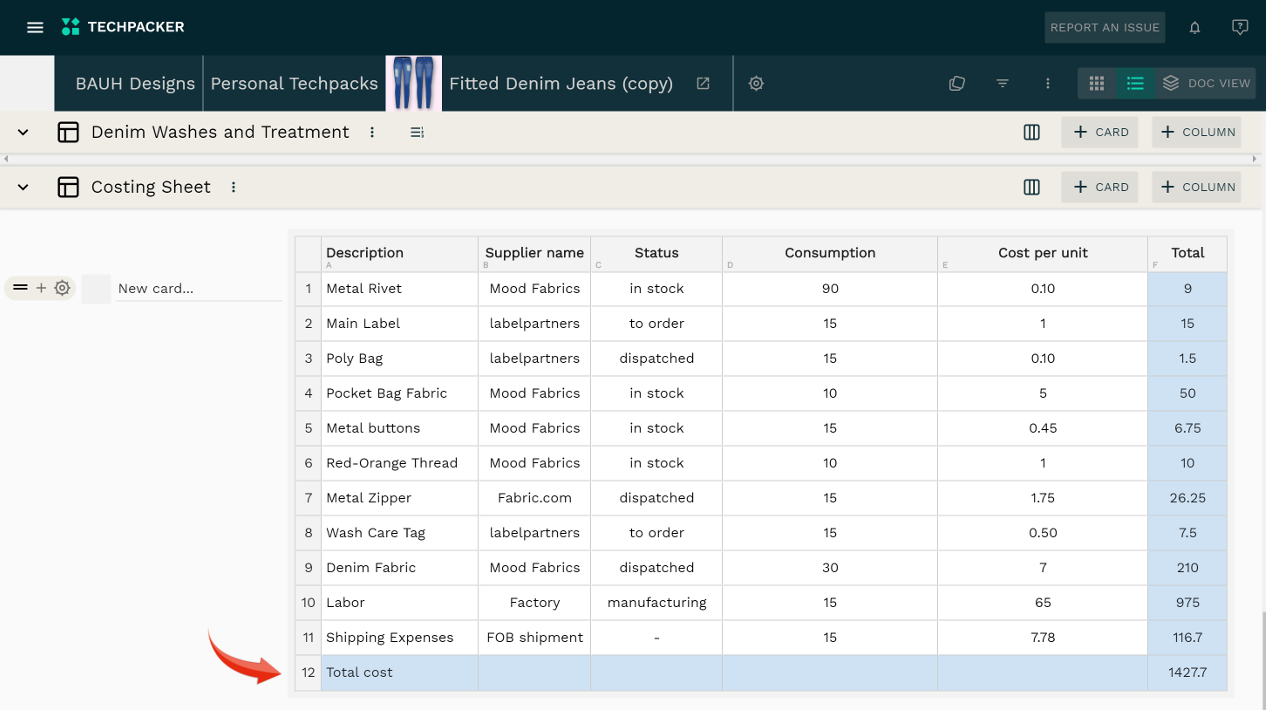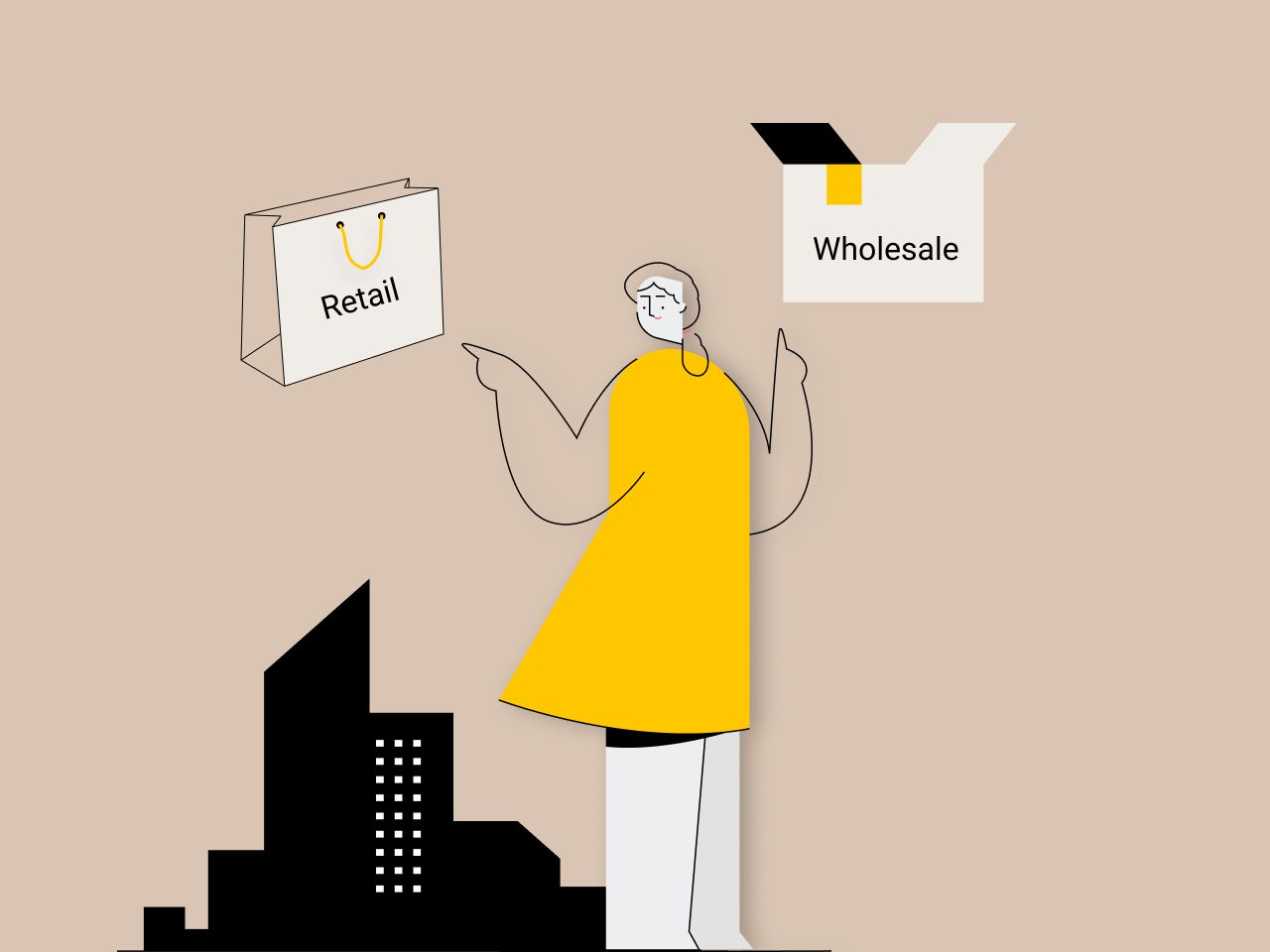Contents
In the apparel industry it’s essential to understand important components of the supply chain such as Wholesale and Retail. Setting the right Wholesale and Retail price is one of the critical decisions that an apparel business owner has to make. These decisions can be overwhelming for those who are just getting started. In order to help you determine the best structure for your business, in this post we will point out the key differences between Wholesale and Retail price. We will also guide you through the process of calculating them!

What is Wholesale Price?
Wholesale price is a rate charged by the apparel manufacturer or apparel business owner to the retailer. Wholesalers sell products in bulk at the lowest price possible. Usually the more garments you sell the lower rate you quote. Wholesalers don’t sell products directly to the consumers, they sell manufactured apparel to businesses like retail stores. Then the retailers resell products to the consumers.
Generally speaking, wholesalers act as a bridge between manufacturers and retailers.
There are some financial advantages of being a wholesale business. As a wholesale business you don’t have to invest in advertising, storefront rent or the display of goods. Also since you are moving your stock in bulk that cuts down on your shipping costs and your overhead. However, as the size of the wholesale business is large the only requirement is a big capital. Often wholesalers travel to trade shows where they meet the retailers that are willing to buy for their stores.
In wholesale business the profit margin is typically less, however the quantity is large. This type of business supplies products not only to nearby areas, but also to other towns, states and countries.
Wholesale prices are always lower than the retail prices. When the retailer buys products from the wholesaler they pay the cost of the products plus the profit set up by the wholesaler. Accordingly, the end consumer buying a garment at a retail store pays for:
Actual cost of the garment + Wholesaler’s profit + Retailer’s Profit
How to Calculate Wholesale Price
To calculate the Wholesale Price of your garment or accessory, first start by calculating the cost of your manufactured garments. The cost of goods manufactured (COGM) will include the cost of making the product, materials, labor, shipping and handling and any other costs that go into making a final product ready to sell. All components that typically go into your Costing Sheet.
Cost of Goods Manufactured Formula:
COGM = Material Cost + Labor Cost + Additional Costs and Overhead

Many apparel business owners calculate the Wholesale Price by multiplying the cost of goods by two. In the apparel industry, business owners usually aim for 30-50% wholesale profit margin. The profit margin is what you earn when your product is sold. A profit margin is sometimes also called markup percentage.
Wholesale Price includes the materials costs, manufacturing and labor invested, other overheads like rent, electricity, etc., and a minimal profit margin.
Wholesale Price Formula:
Wholesal Price = Materials Cost + (Labour Invested x How Much You Value Time) + Other Overheads (Rent, Fixed Costs, Electricity, etc) + Profit Margin
What is Retail Price?
The retail price is the final price of a garment that is sold to the end users or consumers. If you are only distributing final products to the end buyer you can call yourself a retailer. Retail price usually includes a significant markup.
The store owners buy apparel from the wholesaler with the purpose of reselling it to the customers. Individual businesses can also do both wholesale and retail through different sale channels like stores (brick-and-mortar or online) and direct sales.
Retail price is always higher than the wholesale price. The cost of the garment does not vary with its quantity as in wholesale. Retailers are setting the price and it remains constant until the shop owner decides to offer any kind of discount. Retailers act as a bridge between the wholesalers and the end consumers.
In retail the garments are sold in small lots. There are a number of reasons behind the high price in the apparel retail business: advertisement cost, cost of showrooms, salary of workers, water/electricity bills, rent, etc. Display of garments and accessories is also one of the biggest expenses as the retailers face huge competition in the market. Retailers care significantly about the customer experience, including every little detail, for example packaging.
How to Calculate Retail Price
There are a couple of pricing strategies in setting the right Retail price for your apparel business. You can start by doing the market research and compare the prices of your competitors. Determine which segment of the market you are trying to capture. Are you a high-end designer brand or a casual everyday brand? Keep in mind who is your customer. Are they budget-conscious or looking for a unique high-end product?
Before calculating your Retail price you will need to calculate the cost of your manufactured garments and set your Wholesale price as we described above.
To calculate the Retail price of your garment add profit margin to your Wholesale price. In the apparel industry the retailers usually aim for 55-65% profit margin.
Retail Price Formula:
Retail Price = Wholesale Price / (1 - Markup Percentage)
The Retail price of the product can be suggested by the brand or the apparel manufacturer to the retailer. This pricing strategy is called Suggested Retail Price (SRP).
How you calculate the retail price for your apparel business is completely dependent on you, your market, your positioning, your business, your future plans and much more.
To learn more about Pricing Strategies check out this great article.
Summary
The key differences between Wholesale and Retail are:
- Wholesalers typically only deal with limited products, where retailers tend to handle many different products at one time.
- Retail profit margin (markup) is always higher than the Wholesale profit margin.
- Doing Wholesale gives you an opportunity to reach a wider range of consumers by selling your collection in a variety of outlets. While in Retail you are selling exclusively from a particular shop.
- Apparel retail business is a very competitive environment. In fact, you may find a very small amount of wholesalers compared to thousands of retailers.
- The investment capital in Wholesale business is higher than in Retail. But at the same time in Wholesale you don’t have to care about showroom rent and advertising costs.
If you are a business that wants to sell both Wholesale and Retail, it’s smart to create a dual pricing strategy to ensure that you will get the profit. That means you could set a Retail Price for your products on your website that your direct customers see. At the same time you can provide a line sheet with your Wholesale prices for your potential wholesale buyers.
For example if you design T-Shirts and sell them both Wholesale and Retail:
Your Cost of Goods: $10 per one T-shirt
Wholesale Price: $10 x 2 = $20
Retail Price: $20 x 2.5 = $50
Pricing in Today’s Digital Landscape
With the digital era in full bloom retailing has dramatically changed the environment and has required a reevaluation of retailers' pricing strategies and capabilities.
This article by McKinsey focuses on key value categories (KVCs) and key value items (KVIs) and the relevance and evolution of these in pricing strategy in today’s digital retail environment and why it’s important to know:
- The traditional role of key-value categories and key value items in retail price strategy.
- How today’s digital retail environment is changing the game.
- The key implications for creating a winning price strategy.
|
Ready to create your costing sheets? OR Log-in to your account now
Create beautiful products with your team, together. |


